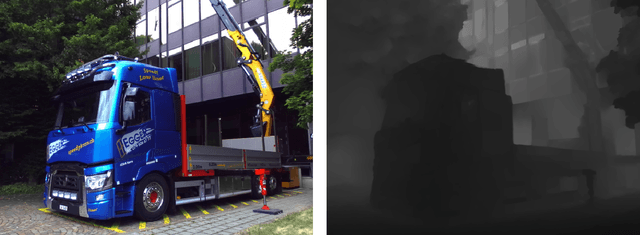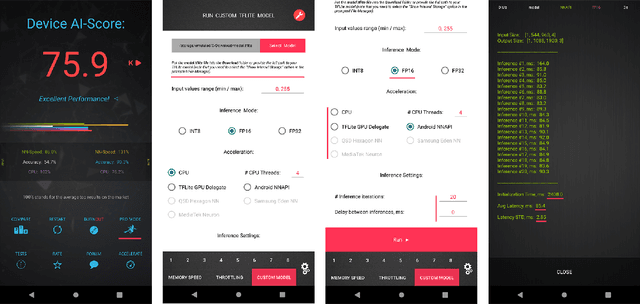Tianpeng Feng
EA-BEV: Edge-aware Bird' s-Eye-View Projector for 3D Object Detection
Apr 18, 2023



Abstract:In recent years, great progress has been made in the Lift-Splat-Shot-based (LSS-based) 3D object detection method, which converts features of 2D camera view and 3D lidar view to Bird's-Eye-View (BEV) for feature fusion. However, inaccurate depth estimation (e.g. the 'depth jump' problem) is an obstacle to develop LSS-based methods. To alleviate the 'depth jump' problem, we proposed Edge-Aware Bird's-Eye-View (EA-BEV) projector. By coupling proposed edge-aware depth fusion module and depth estimate module, the proposed EA-BEV projector solves the problem and enforces refined supervision on depth. Besides, we propose sparse depth supervision and gradient edge depth supervision, for constraining learning on global depth and local marginal depth information. Our EA-BEV projector is a plug-and-play module for any LSS-based 3D object detection models, and effectively improves the baseline performance. We demonstrate the effectiveness on the nuScenes benchmark. On the nuScenes 3D object detection validation dataset, our proposed EA-BEV projector can boost several state-of-the-art LLS-based baselines on nuScenes 3D object detection benchmark and nuScenes BEV map segmentation benchmark with negligible increment of inference time.
Learning Audio-Visual Source Localization via False Negative Aware Contrastive Learning
Mar 25, 2023Abstract:Self-supervised audio-visual source localization aims to locate sound-source objects in video frames without extra annotations. Recent methods often approach this goal with the help of contrastive learning, which assumes only the audio and visual contents from the same video are positive samples for each other. However, this assumption would suffer from false negative samples in real-world training. For example, for an audio sample, treating the frames from the same audio class as negative samples may mislead the model and therefore harm the learned representations e.g., the audio of a siren wailing may reasonably correspond to the ambulances in multiple images). Based on this observation, we propose a new learning strategy named False Negative Aware Contrastive (FNAC) to mitigate the problem of misleading the training with such false negative samples. Specifically, we utilize the intra-modal similarities to identify potentially similar samples and construct corresponding adjacency matrices to guide contrastive learning. Further, we propose to strengthen the role of true negative samples by explicitly leveraging the visual features of sound sources to facilitate the differentiation of authentic sounding source regions. FNAC achieves state-of-the-art performances on Flickr-SoundNet, VGG-Sound, and AVSBench, which demonstrates the effectiveness of our method in mitigating the false negative issue. The code is available at \url{https://github.com/OpenNLPLab/FNAC_AVL}.
Fast and Accurate Single-Image Depth Estimation on Mobile Devices, Mobile AI 2021 Challenge: Report
May 17, 2021



Abstract:Depth estimation is an important computer vision problem with many practical applications to mobile devices. While many solutions have been proposed for this task, they are usually very computationally expensive and thus are not applicable for on-device inference. To address this problem, we introduce the first Mobile AI challenge, where the target is to develop an end-to-end deep learning-based depth estimation solutions that can demonstrate a nearly real-time performance on smartphones and IoT platforms. For this, the participants were provided with a new large-scale dataset containing RGB-depth image pairs obtained with a dedicated stereo ZED camera producing high-resolution depth maps for objects located at up to 50 meters. The runtime of all models was evaluated on the popular Raspberry Pi 4 platform with a mobile ARM-based Broadcom chipset. The proposed solutions can generate VGA resolution depth maps at up to 10 FPS on the Raspberry Pi 4 while achieving high fidelity results, and are compatible with any Android or Linux-based mobile devices. A detailed description of all models developed in the challenge is provided in this paper.
 Add to Chrome
Add to Chrome Add to Firefox
Add to Firefox Add to Edge
Add to Edge